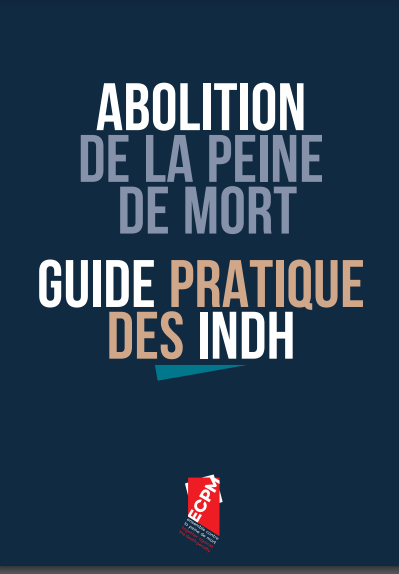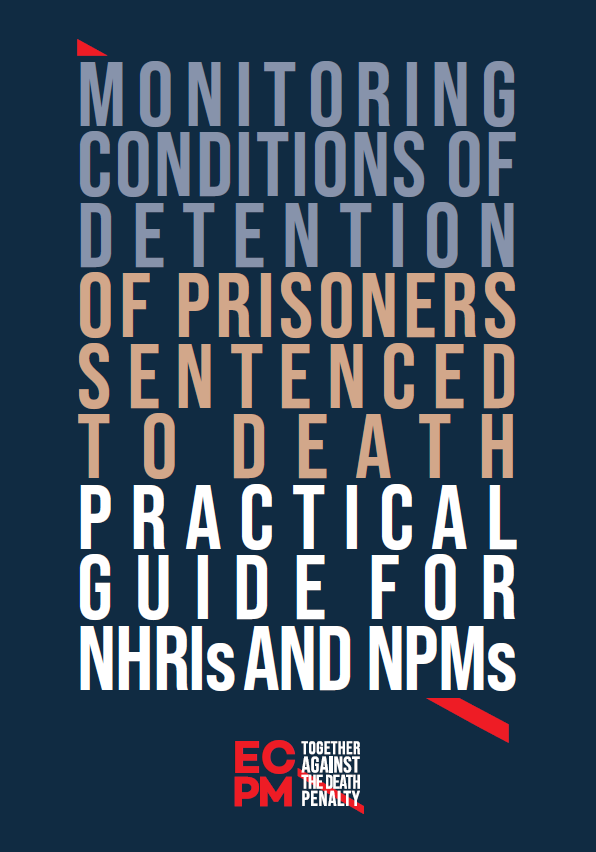Prisoners sentenced to death are likely to be among the most marginalised groups in prisons worldwide. They are often forgotten, neglected and ignored by prison authorities, and may be held in unfavourable and inhumane conditions that fail to comply with international human rights standards. They find themselves in a specific situation, often characterised by a high level of psychological uncertainty about their future. Prisoners sentenced to death face deprivation and hardship in their daily lives in prison, which has an impact on their physical and mental well-being.
Monitoring bodies (at national, regional and international level) play a central role in ensuring that persons deprived of their liberty are held in an environment that respects their dignity and other human rights. These bodies can also play an important role in driving change in policies and practices.
In light of these specific challenges, ECPM has developed this guide to assist NPMs and NHRIs in their work to assess detention conditions of prisoners sentenced to death. This practical guide supports and complements ECPM’s work on the detention conditions of individuals sentenced to death and its wider advocacy and awareness-raising activities.
This guide was developed in collaboration with Morocco’s National Human Rights Council (Conseil national des droits de l’Homme – CNDH).
Who can use this guide ?
This guide is primarily aimed at NPMs and NHRIs. It provides tools, practical guidance and advice for assessing the specific conditions of prisoners sentenced to death, in accordance with international and regional standards. It aims to facilitate the monitoring process and to ensure that the rights of prisoners sentenced to death are at the centre of the efforts of detention monitoring bodies. Beyond NHRIs and NPMs, other actors may be interested in this guide, including academics, international organisations, civil society actors and donors.
Although closely linked to the work of detention monitoring, this guide does not address issues related to the monitoring of conditions of deprivation of liberty in immigration centres or police custody facilities.
How to use this guide ?
Designed as a practical handbook for detention monitoring bodies, this guide should be considered a “living instrument”. Through general information, checklists, questions, innovative practices and advice from practitioners, this guide sets out the various stages involved in analysing the conditions of detention of women and men sentenced to death and helps to identify the systemic risk factors affecting this group. It can be used as a tool in various contexts, but its application and implementation will depend on each situation.
Ideally, this guide should not be read in isolation or as a “standalone” document, but as a complement to and in coordination with other general guides for assessing detention conditions
How was this guide developed ?
This guide is based on a literature review of existing resources on prisoners sentenced to death, including international and regional resources from intergovernmental organisations, NGOs working to combat the death penalty, press articles and other open sources.
The information contained in this guide, such as monitoring techniques, practical procedures and guiding principles of monitoring bodies, is internationally recognised and implemented by many monitoring bodies. This guide has been inspired by other practical guides, particularly those dealing more broadly with the monitoring of places of deprivation of liberty, such as those developed by the Association for the prevention of torture (APT) and by The Advocates for Human Rights. The information presented here has been adapted to the needs of prisoners sentenced to death.
About other resources by ECPM for NHRIs

